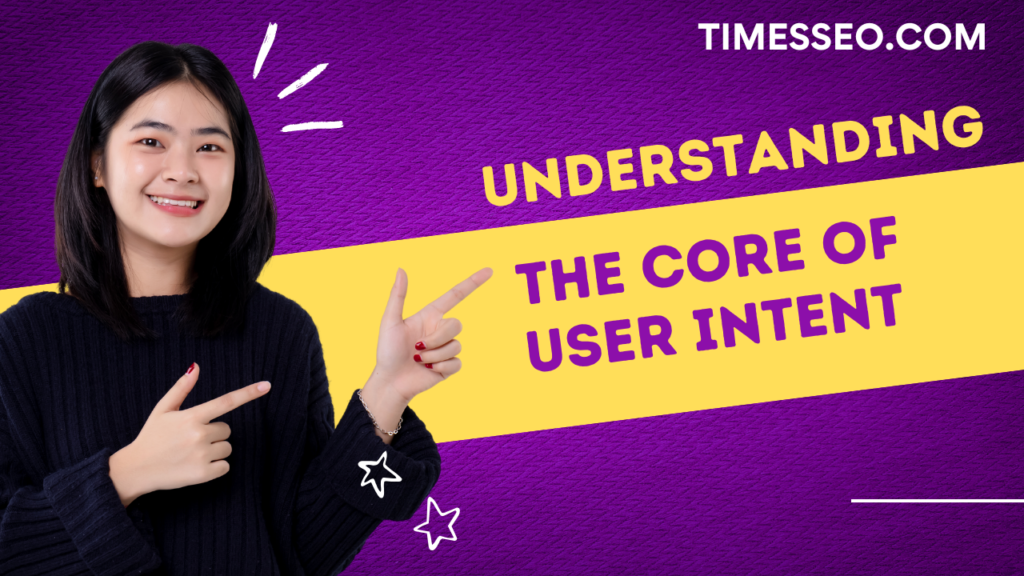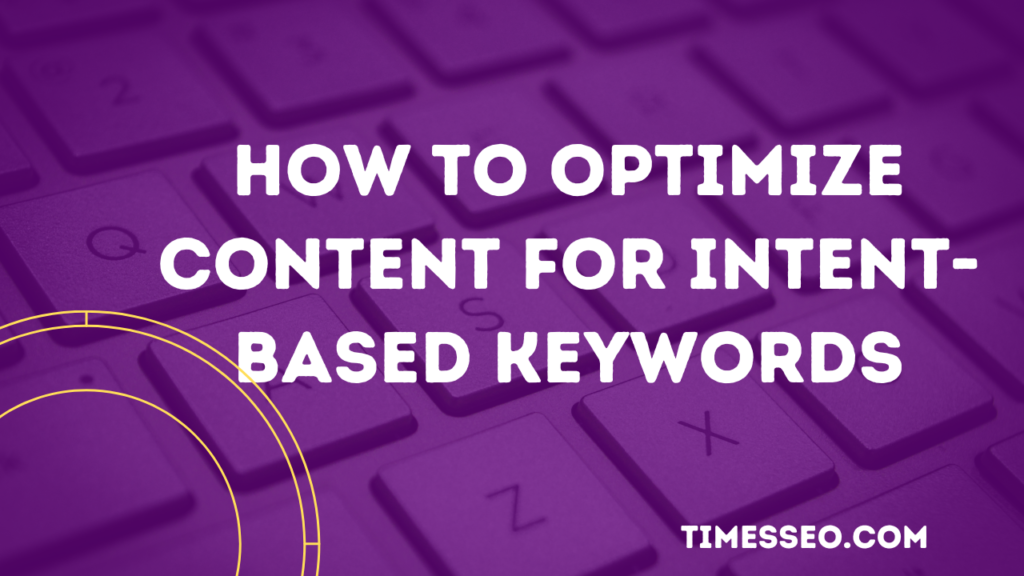
How to Align SEO Keyword Ideas with User Intent
Learn how to effectively match your SEO keyword ideas with user intent to drive more relevant traffic and boost conversions. This blog post breaks down different types of search intent and provides actionable strategies to align your content and keywords with each stage of the buyer’s journey for better SEO performance.
Table of Contents
Introduction
Why the Secret to SEO Success Is Keyword Intent
Let’s get real—SEO isn’t just about showing up in search results. It’s about showing up at the right time, with the right message, for the right audience. That’s where user intent comes in. If you’re guessing what people want, you’re probably missing the mark. But if your keyword ideas are aligned with what users actually intend to find, you’re golden.
What is User Intent?
User intent, also called search intent, refers to the purpose behind a person’s specific search query on Google. Are they trying to learn something? Buy something? Go somewhere? Knowing this helps you deliver exactly what they need—and that’s what Google rewards.
Types of User Intent Explained
There are four primary types:
- Informational – The user wants to learn.
- Navigational: The user is trying to find a specific brand, company, or website they already have in mind.
- Commercial Investigation – The user is comparing options.
- Transactional: The user is ready to act or buy something.
Understanding the Core of User Intent
Navigational Intent
People with this intent already know what brand or website they want. Think: “Facebook login” or “Nike shoes official site.” They’re just looking for the quickest route.
Informational Intent
These searchers want knowledge. They ask questions like:
- “How to bake a chocolate cake?”
- “What is blockchain?”
You’re not selling here—you’re educating.
Transactional Intent
Here, users are ready to convert. They’ll search things like:
- “Buy noise-cancelling headphones”
- “Best deals on laptops near me”
These folks want fast results and clear CTAs.
- “Best smartphones under $500”
- “Ahrefs vs SEMrush comparison”
The Connection Between Keywords and Intent
How Search Queries Reflect Intent
Words like “how,” “why,” and “what” signal learning. Phrases like “buy,” “cheap,” or “discount” show the user is ready to act. Recognizing these patterns is crucial.
Tools to Identify and Analyze Keyword Intent
Google SERP Analysis
Look at the top results for your keyword:
- Blogs = Informational
- Product pages = Transactional
- Review sites = Commercial
Using SEO Tools like Ahrefs, SEMrush, and Ubersuggest
These tools show keyword intent directly or help by analyzing:
- Search volume
- CPC (Cost Per Click)
- Content types that rank
Leveraging Google Search Console for Intent Clues
Use Search Console to see:
- What queries are bringing people to your site
- What pages they land on
- How they behave after clicking
Keyword Ideas by User Intent Stage
Informational Keyword Examples
- “How does solar energy work?”
- “What is intermittent fasting?”
- “Tips for remote productivity”
Navigational Keyword Examples
- “LinkedIn login”
- “Mailchimp pricing page”
- “OpenAI ChatGPT free”
Commercial and Transactional Keyword Examples
- “Compare WordPress hosting plans”
- “Buy DSLR camera online”
- “Best CRM software for freelancers”
Creating Content That Matches User Inten
Blog Posts for Informational Intent
Long-form guides, tutorials, and educational blogs perform best here.
Product Pages for Transactional Intent
Include high-converting CTAs, specs, reviews, and trust signals.
Comparison and Review Pages for Commercial Intent
Write head-to-head comparisons, pros and cons, use cases, etc.
Brand Pages for Navigational Searches
Make it easy for users to find your homepage or product/service page.
Aligning Intent with the Buyer’s Journey
Awareness Stage Keywords
- “What is SEO?”
- “Signs of poor web hosting”
Consideration Stage Keywords
- “Best web hosts for startups”
- “Compare Bluehost and SiteGround”
Decision Stage Keywords
- “Buy SiteGround hosting plan”
- “Start Bluehost trial now”
How to Optimize Content for Intent-Based Keywords
Title Tags and Meta Descriptions
Include the keyword and hint at the intent. Make it click-worthy.
On-Page Content Structure
Use clear headings, bullet points, and concise paragraphs to match search expectations.
Call-to-Actions that Match Intent
Don’t ask someone in the awareness stage to “Buy Now.” Guide them gently instead.
Mistakes to Avoid When Targeting User Intent
Using Generic Keywords Without Context
Just “laptop” is too vague. Be specific: “affordable laptop for students.”
Misidentifying Intent
Don’t write a sales page for a keyword like “how to create a blog.”
Keyword Stuffing vs Natural Language
Use keywords naturally. Speak to humans, not algorithms.
Monitoring and Adapting to Intent Over Time
Tracking User Behavior
Use tools like Hotjar, GA4, or Search Console to see what users are doing.
Revising Content Based on Performance
Update content that’s not ranking or converting. Align it better with current intent.
Evolving Intent in a Changing Market
Trends shift. New terms arise. Stay updated and tweak your strategy.
Case Studies: Success Through Intent-Focused SEO
E-commerce Site Boosting Sales
An online store switched from generic terms to intent-driven keywords and saw a 40% increase in conversions.
SaaS Business Improving Lead Generation
After aligning blog topics with informational and commercial keywords, lead quality and volume improved dramatically.
Final Checklist to Align Keywords with Intent
✅ Identify user intent before creating content
✅ Use tools to research SERPs and keyword types
✅ Match content formats to searcher needs
✅ Optimize CTAs and page structure
✅ Review performance and update regularly
Conclusion
At the heart of effective SEO lies one powerful principle: understanding your audience’s intent. If you can meet people exactly where they are—whether they’re learning, comparing, or buying—you’ll naturally attract better traffic and drive real results. Align your keywords with user intent, and you’re not just getting more clicks—you’re building trust, authority, and conversions.
Frequently Asked Questions
Look at bounce rates, time on page, and conversion goals. If users are engaging, you’re on track.
Yes, but only if it's well-structured with clear sections for each intent.
Absolutely. They often reflect very specific intent and lead to higher conversions.
At least every 3–6 months, or when you see traffic or ranking drops.
Check the Google SERP. The type of content ranking tells you what users expect.
Table of Contents
Popular Posts
-
 Affordable Technical SEO Audit for Small Business: A Complete Guide26 Jun 2025 Blog
Affordable Technical SEO Audit for Small Business: A Complete Guide26 Jun 2025 Blog -
 How to Get an Affordable Technical SEO Audit for Small Business27 Jun 2025 Blog
How to Get an Affordable Technical SEO Audit for Small Business27 Jun 2025 Blog -
 The Ultimate Local SEO Audit Checklist for Startups28 Jun 2025 Blog
The Ultimate Local SEO Audit Checklist for Startups28 Jun 2025 Blog -
 Local SEO Audit Checklist for Startups: A Beginner’s Guide28 Jun 2025 Blog
Local SEO Audit Checklist for Startups: A Beginner’s Guide28 Jun 2025 Blog -
 Top On-Page SEO Audit Steps for Service Websites Every Business Should Know29 Jun 2025 Blog
Top On-Page SEO Audit Steps for Service Websites Every Business Should Know29 Jun 2025 Blog -
 Technical SEO for WordPress: The Ultimate Beginner’s Guide01 Jul 2025 Blog
Technical SEO for WordPress: The Ultimate Beginner’s Guide01 Jul 2025 Blog -
 The Impact of On-Page SEO Audit Steps for Service Websites on UX01 Jul 2025 Blog
The Impact of On-Page SEO Audit Steps for Service Websites on UX01 Jul 2025 Blog -
 Technical Mobile SEO Audit Tips for Developers02 Jul 2025 Blog
Technical Mobile SEO Audit Tips for Developers02 Jul 2025 Blog -
 Complete SEO Backlink Audit Guide for Better Google Rankings03 Jul 2025 Blog
Complete SEO Backlink Audit Guide for Better Google Rankings03 Jul 2025 Blog -
 Boost Your Rankings with Technical SEO for WordPress01 Jul 2025 Blog
Boost Your Rankings with Technical SEO for WordPress01 Jul 2025 Blog






